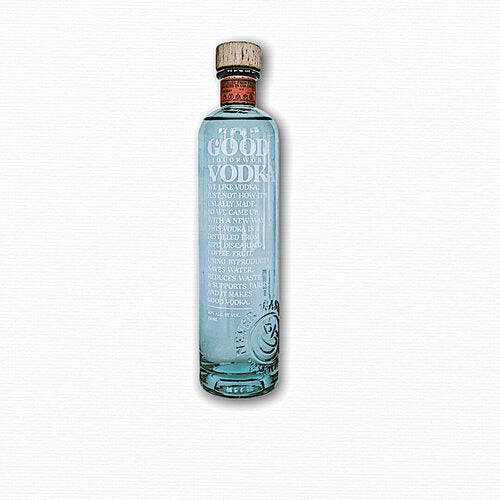Good Liquorworks Vodka Good
$ 0,00
The vodka got its start six years ago when, Byrne says, Willey paid a visit to a coffee farm in Guatemala and saw the discarded coffee fruit. “For a distiller, when you see a pile of fruit that’s not being used, you’re like, This is gold. This is filled with sugar.
Sugar is all you need to make alcohol.”
In Colombia, he says, the coffee fruit’s pulp has been usually “very marginally” used to make breads, sauces, and desserts. It’s also used as a fertilizer by many farmers, something Byrne says they realized as they worked on the vodka and which they tried to remain conscious of. To not take that away from farmers or give them additional work, Byrne explains, they landed on using leftover pulp (one step further in the coffee-processing chain) that doesn’t get used as a fertilizer. The work on the part of the farmers is limited, he says, to redirecting that leftover pulp into barrels.
Quick Shipping and Professional Packaging
We offer a broad range of shipping options thanks to our long-running partnerships with UPS, FedEx and DHL. Our warehouse staff are educated to pack your items exactly as per the specifications that we supply. Your items will undergo a thorough inspection and be securely secured prior to being shipped. We ship to thousands of customers each day from multiple countries. This is a sign of our determination to become the largest online retailer worldwide. Both Europe as well as the USA have distribution and warehouse centers.
Please note that orders with more than one item will be given a processing time according to the specific item.
Prior to shipping, our team will perform an exhaustive inspection of the items you purchased. Today, the majority orders will be shipped within 48 hours. The delivery time is estimated to be between three and seven days.
Returns
The stock is constantly changing and cannot be fully controlled by us due to the involvement of several different parties, such as the factory and our warehouse. The actual stock can change at any moment. Please be aware it's possible your order may become unfulfilled when you have placed the order.
Our policy is valid for a period of 30 days. If it's been more 30 days since you purchased your item and we're unable to offer you a full refund or exchange.
You are able to return an item when it's unopened and is in the same condition when you first received it. It must also be in the original packaging.
Related products
Uncategorized
Sauvignon Blanc
Cabernet Sauvignon
1865 Cabernet Sauvignon Selected Vineyards Maipo Valley 1865
Vodka
Cabernet Sauvignon
Pinot Noir


































